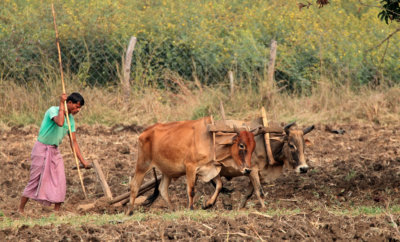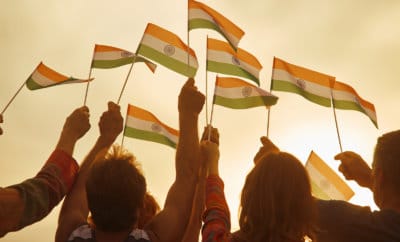India
Climate Change Leading to Farmer Suicides in India?

Heat wave, hailstorm and flood can cause ripple effects throughout the Indian economy, says a study by the University of California at Berkeley.
Seven per cent of farmers’ suicides in India may have to do with global warming, a study by the University of California at Berkeley shows. Climate change has already caused more than 59,000 suicides in India over the last 30 years, according to UC Berkeley researcher Tamma Carleton, whose study suggests that failing harvests that push farmers into poverty are likely the key culprits.
Suicide Rates have Doubled
Carleton found that warming a single day by 1 degree Celsius during the country’s agricultural growing season leads to about 65 suicides whenever that day’s temperature is above 20 degrees Celsius. Warming a day by 5 degrees Celsius has five times that effect.
The study seeks to explain India’s increasing suicide problem, where suicide rates have approximately doubled since 1980. More than 133,000 people killed themselves in 2015, according to data from the National Crime Records Bureau. India accounts for the highest number of suicides in the world, according to WHO.
Paris Agreement
The findings in the report can be quite daunting, and came just after two months after US President Donald Trump backed out from the Paris Climate Change agreement, which has been adopted by 196 countries. However, after US’ decision to withdraw from the pact, India and China stepped up to pledge to their commitments under the accord.
For India, agriculture remains the main source of livelihood for more than half of the population. However, due to climate fluctuations such as heat waves, unpredictable monsoon and drought, the contribution of agriculture to the Gross Domestic Product is only 14 percent, according to an NCRB report.
“My findings suggest that this warming will be accompanied by a rising number of lives lost to self-harm,” says Carleto
Bringing Down Farmer Suicide Rates
The study indicates that farmers could be protected from major economic shortfalls during these events by using policies like crop insurance or improvements in rural credit markets.
In March 2017, after hailstorms hit Marathwada in Maharashtra, many farmers lost crops worth lakhs of rupees. “I lost not only my stock but the 20 lakh rupees I had invested in the crops as well,” a farmer told Rural India Online, recollecting the day when hailstorm struck his district.
Conditions like heat wave, hailstorm and flood, according to Carleton, can cause ripple effects throughout the Indian economy as poor crops increase food prices, draw on household savings and shrink agricultural jobs. It is during these times that a staggering number of people often turn to suicide, and they are generally the male heads of the households.
Asia at Risk
Severe climate change in Asia is also posing a high risk of flooding in India, a report by the Asian Development Bank (ADB) and the Potsdam Institute for Climate Impact Research (PIK) showed. South India may witness a reduction in rice yields by five per cent by 2030, but it could also potentially increase in the northern states of India.
“The global climate crisis is arguably the biggest challenge human civilization faces in the 21st century, with the Asia and Pacific region at the heart of it all,” Bambang Susantono, vice president for Knowledge Management and Sustainable Development, ADB, from Indonesia said, according to PTI.




You must be logged in to post a comment Login